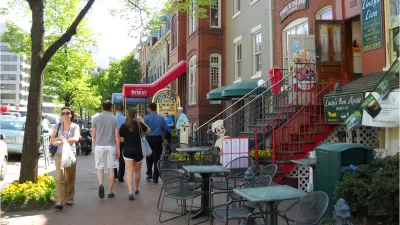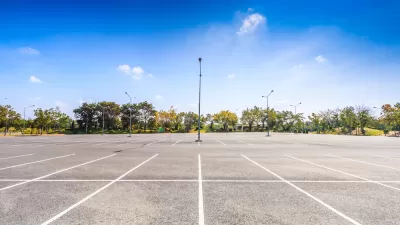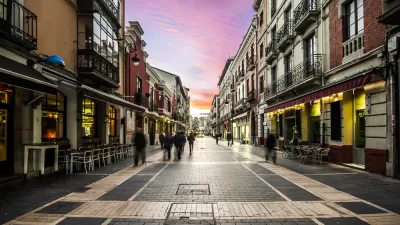Walkable areas are more prosperous in cities all around the country, a report from Foot Traffic Ahead concludes.

Walkable areas are more prosperous than non-walkable areas in cities, according to the "Foot Traffic Ahead," report. The connection between density and prosperity might not be a surprise, but the extent of the connection might be surprising. "It’s not a trend confined to coastal cities; it’s on the rise in the Rust Belt, the Sun Belt, tech metropolises, government centers, innovation centers, and millennial magnets,” Patrick Sisson reports for Curbed.
Denser more walkable neighborhoods are continuing to become yet more dense and represent a larger share of the city’s wealth. "In Dallas, a poster child for sprawl, the 38 WalkUPs comprise 0.10 percent of metro land area, but 12 percent of metro GDP," Sisson writes.
Low-density areas with segregated building types lack the flexibility that denser areas have, the report argues, giving more walkable areas an advantage.
FULL STORY: Why building walkable cities is the key to economic success

Study: Maui’s Plan to Convert Vacation Rentals to Long-Term Housing Could Cause Nearly $1 Billion Economic Loss
The plan would reduce visitor accommodation by 25,% resulting in 1,900 jobs lost.

North Texas Transit Leaders Tout Benefits of TOD for Growing Region
At a summit focused on transit-oriented development, policymakers discussed how North Texas’ expanded light rail system can serve as a tool for economic growth.

Why Should We Subsidize Public Transportation?
Many public transit agencies face financial stress due to rising costs, declining fare revenue, and declining subsidies. Transit advocates must provide a strong business case for increasing public transit funding.

Alabama: Trump Terminates Settlements for Black Communities Harmed By Raw Sewage
Trump deemed the landmark civil rights agreement “illegal DEI and environmental justice policy.”

Dear Tesla Driver: “It’s not You, It’s Him.”
Amidst a booming bumper sticker industry, one writer offers solace to those asking, “Does this car make me look fascist?”

A Visual Celebration of Manhattan’s Chinatown Elder Community, Through Food
Lanterns, cafeteria trays, and community connection take center stage in this stunning photo essay.
Urban Design for Planners 1: Software Tools
This six-course series explores essential urban design concepts using open source software and equips planners with the tools they need to participate fully in the urban design process.
Planning for Universal Design
Learn the tools for implementing Universal Design in planning regulations.
City of Santa Clarita
Ascent Environmental
Institute for Housing and Urban Development Studies (IHS)
City of Grandview
Harvard GSD Executive Education
Toledo-Lucas County Plan Commissions
Salt Lake City
NYU Wagner Graduate School of Public Service




























